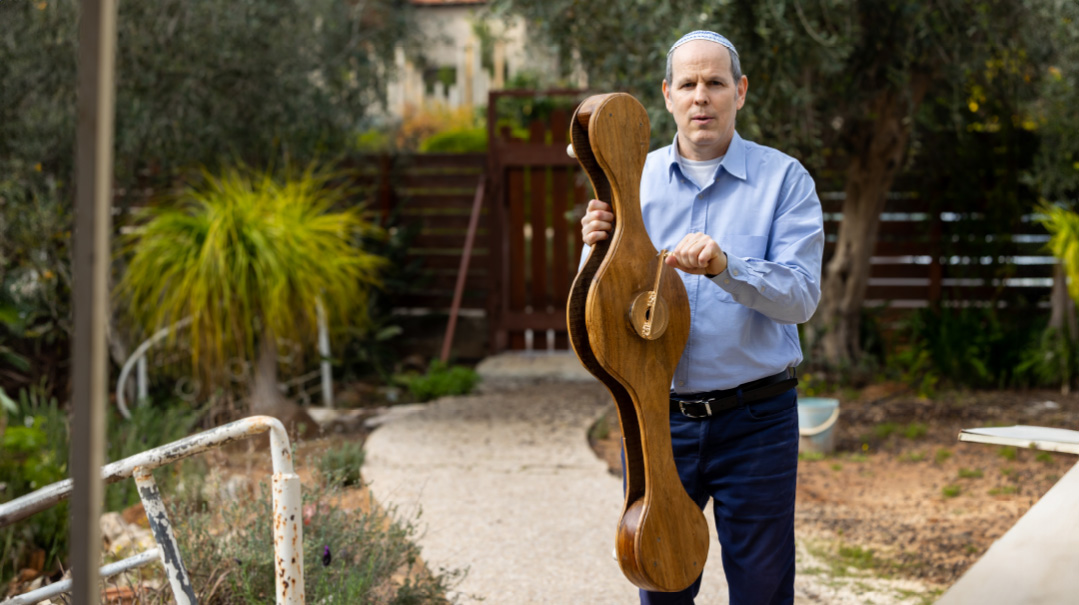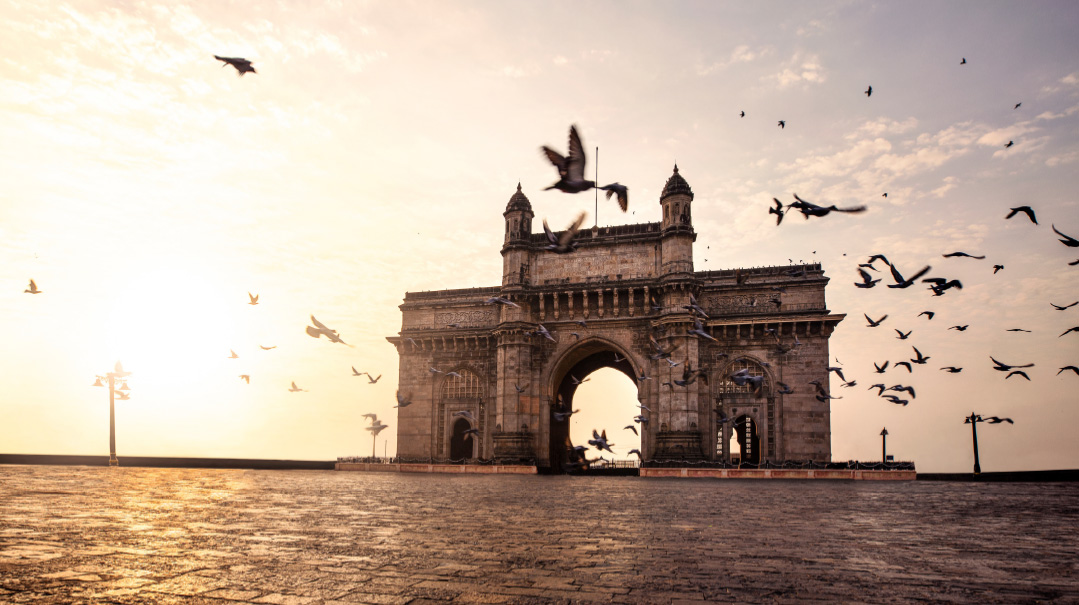Don’t Shoot Me


I’ve always enjoyed photography — I’m that person slowing down the family hike to snap the perfect picture of the waterfall framed by trees — but I never thought about going for professional training, having chosen to pursue the far more lucrative career of frum publishing. Recently, though, I’ve been thinking that the time has come for me to take my photographic skill up another notch. Because, frankly, my kids are adorable. The world — not to mention my mother — needs more cute pictures of my kids. But not the type snapped when they’re holding up their construction-paper projects next to a dining room table littered with cornflakes and glue; I mean the stunning type of picture that you can enlarge and actually hang up in your living room, the one with the blurry background and golden sunlight and angelic smiles.
It’s obviously time for a photographic intervention.
But life is busy, baruch Hashem, what with the kids and work and scraping off all those cornflakes that the kids glued onto the table, and so my photography aspirations become just another one of those dreams that get shelved along with my plans to organize the closets. Until I hear about photographer Shmuel Diamond’s online course, and I’m intrigued, if not a bit skeptical. I’ve watched a number of beginner’s guides to photography and memorized the definitions of aperture and ISO. Will this course make enough of a difference? But it’s the minimal time commitment, the ability to do it on my own schedule (read: at 1 a.m.), and the promise of personal guidance from Shmuel, in the form of extensive video reviews after each assignment, that get me. It’s worth a shot.
I watch Shmuel’s camera-buying guide and decide that I’m what he calls a hacker — I don’t want to be a professional photographer, I just want to learn how to take great pictures. And so, for the first time ever, I’ve upgraded to a dSLR (the lower-end one that he recommends, for nonprofessionals, which comes in at about $650). I can’t help but harbor a hope that just clicking the shutter with my new dSLR will make all the difference.
Week One — Balancing Act
My Notes
The secret ingredients to a great photo:
Composition — seeing the underlying geometric shape of each photo, learning to spot the common structures of photos that appear so different, and what makes them work.
The contrast, textures, patterns, symmetry, and movement that bring a photo to life.
Balance in photo is very important but that doesn’t mean every subject is in the middle of the frame. Beauty is added by other elements but the subject creates the emotional connection.
My Journal
I log in somewhat nervously. I’m excited to learn about photography, but I have a really short attention span. I hope that the teaching videos aren’t super boring. I’m surprised to see Shmuel sitting in front of a table lined with students — I’d expected to see him talking directly to the camera in front of a studio background. Once the class gets going, though, I immediately understand how the presentation is much more dynamic when it’s being delivered to real-life people. It’s fascinating to see how he breaks down the elements of a good photo.
I then watch the video presenting our homework assignments — and Shmuel’s reminder that we must have a 45-minute photo shoot each week — with someone else’s kids, he recommends.
I finish the class enthused, ready to start clicking and leave this career for one where I get to capture breathtaking bridal portraits and heartwarming snaps of newborn fists (I make a mental note to tender my resignation after I finish the article). Suddenly, everything around me is suffused with texture, brimming with pattern, defined by lines. I notice the dining room table and the stark lines of my dining room chairs stacked atop it from the evening’s sponja. It looks like the perfect pattern for my homework assignment. I crouch on the floor, trying to capture the perfect angle. I check my camera screen and frown. If Shmuel Diamond were here, this would be an awesome picture, I know. But he’s not. And none of his sample images have ever featured brimming baskets of unfolded laundry in the background.
The next day, I grab my camera when I go to the park with the kids. Gotta get in that 45-minute shoot. But it turns out that my dSLR doesn’t turn everything to gold. My images are too dark, too bright, unfocused. I was so much more comfortable with my old point-and-shoot. We’re in the park for over an hour, but in between the fights and the runny noses and the pick-me-up-for-the-slides, I’m sure I can clock a 45-minute assignment. I have good intentions. They’ll have to be enough.
It’s not until the end of the week that I realize I forgot to finish my homework. I roam my house, searching for patterns and texture. A line of carrots? (Hey, it is Thursday night). Good enough. I click and submit. Whew! I’m done.
Shmuel’s Review
It’s always difficult for me to critique the first assignment because you haven’t really learned anything yet. These images do show some sensitivity to balance, and you understand the concept of textures and patterns. You’ll look back on these pictures in just a couple weeks and say, “Wow, I can’t believe how much I’ve learned!”
Week Two
Stay Focused
My Notes
Point of entry — where your eye goes first in image — sharpest part of the image. From the point of entry, the viewer should have a logical and enjoyable “trip” around the scene. In a close-up, point of entry is the eyes.
Crop in close to create intimacy and intensity.
Sharpness is based on distance from lens. How to focus. What keeps a camera from focusing?
My Journal
Like I said, I’ve read and watched a lot of tutorials, so I know about balance and symmetry, but ten minutes in, I’m already feeling kind of stupid about my know-it-all attitude. Point of entry? Directional tensions? I’d never even heard those terms. And the ways Shmuel explains the rule of thirds and principles of creating balance are so much more complex than the understanding I’d had. He toggles back and forth between several versions of the same picture — the subject centered, the subject to one side, the subject looking in the other direction — and has us identify the best option. It’s amazing how everyone instinctively picks the same picture, and it’s fascinating to have him break down the concrete rules for what works when and why. I never realized art could be so objective.
The class then covers focus — since, after all, the part of the image that’s in focus is typically the point of entry. To demonstrate, Shmuel picks up his camera, focuses on a nearby object, and clicks. The shutter whirs, and half a second later, the image he shot appears on the computer screen above his head. I am instantly overwhelmed with dejection. A cheap ballpoint pen atop a white Formica tabletop… and the image is more beautiful than any sunset I’ve ever shot.
For homework, we have to practice shifting focus, like those pictures where there are two people, one out of focus. A classic. I set up my models — two stuffed animals — on the guest room beds. Turns out that focusing is harder than it looks.
Time for the weekly shoot. I think guiltily of Shmuel’s injunction, but then head back to the park with my kids — someone’s gotta watch them. But my boys lose patience after a few minutes of posing. I’m starting to feel a little embarrassed by my halfhearted shoots.
Shmuel’s Review
Great work! You’re already starting to pay serious attention to getting rid of extraneous space, and I can see that you’re paying attention to directions and tensions. You’re starting to have a deeper understanding of the many components that go into an image. There are many other things, but at this point it’s better to concentrate on the fundamental aspects of composition. You’re building the understanding that will serve as the foundation for the rest.
WEEK THREE
Think Slow, Fast!
My Notes
Exposure is controlled by three elements: aperture (size of opening allowing light into camera), shutter speed (how fast shutter is open for), ISO (sensitivity of sensor to light).
Fast shutter speed freezes movement, slow shutter speed shows movement (through motion blur). Underexposed means too dark, overexposed means too light.
OK, now we’re finally starting to learn how to use the different modes on a camera. We’re starting with shutter speeds — one fast enough to freeze a kid running, one that shows motion blur, one slow enough that the same subject appears three times in one frame, one that shows traffic line at night.
I’ve also asked a neighbor if I can borrow her kids (I’ve repented the error of my earlier ways) for a photo shoot and she agrees. We go out right before Shabbos, when the kids are dressed in their best, and I practice clicking with a bevy of eager models. Her girls preen and direct me — now take one of me sitting here , now take one of us holding hands and jumping off the steps, oooh! I’m going to climb the tree! Then it comes time for my homework, and the kids have a blast running toward and away from me. I frown over my camera, fingers hovering over the dial as I speed up and slow down the shutter speed to freeze their action or capture it in a blur. Forty-five minutes later, I have over 400 pictures. We return just half an hour before Shabbos, to the smell of burned cholent.
By the time I’m done salvaging the unscorched beans and scrubbing the pot, the candlelighting siren’s about to wail so reviewing the pictures will have to wait until Motzaei Shabbos.
I did get some gorgeous shots, but there are also a lot of pictures that are out of focus or too dark or too light or both and my heart sinks. My pictures have improved, sure, but so many are just still so bad. Are all those cute pictures the product of skill and knowledge, or just a fortuitous combination of luck and the continuous shooting mode? If you took one thousand monkeys and put them in a room with a thousand pieces of technology, after they finished banging out Hamlet, would they snap an adorable portrait of your kids?
Shmuel’s Review
You did a great job with this homework, which was very specifically designed to demonstrate very specific points. You’re already seriously thinking about your pictures. You’ve made great progress — there’s real intelligence going into these pictures, and you’re already thinking about tensions, shapes, and lighting.
WEEK Four
A hole lot of fun
My Notes
Aperture is the size of the hole that light travels through. The lower the number, the less hole is covered and more light in image. The larger the number, the more of hole is covered, which means less light in image.
Focal length, lens distortion. Depth of field reflects sharpness of image. Shallow depth of field means a blurry background, but good for portraits. Wide depth of field means more of the image is in focus, sharper background.
My Journal
At last, the blurry backgrounds I’ve been waiting for! We finally learn how to vary depth of field — how to achieve a shallow depth of field (that blurry background) versus a wide one (where most of the picture’s in focus). Shmuel also explains some of aperture’s effects — at a wide aperture, you’re going to see those cool circles of light, called bokeh, while at a narrow aperture the lights will give you a starburst effect.
But this class marks another milestone for me — my first real photo shoot for this class’s homework. Not just grabbing a neighbor’s kids and clicking, but meeting with a real-live stranger and taking pictures of her and her baby. I am so nervous. What if all the pictures are terrible? What if I don’t get a single useable shot? What if I’m exposed as a talentless amateur? (I told her I’m a talentless amateur, but still.)
To distract myself from biting my nails, I watch Shmuel’s class on scouting locations. I watch how he adjusts his settings when the picture’s too light or too dark, how he cups his hand around the lens in direct sunlight to minimize glare, the way just taking a few steps to the left so that he’s standing in the shade changes the whole image. I’m finally starting to understand how it all comes together.
At midnight the night before my shoot, it hits me: I forgot to pack the kids’ lunches. Time to do the obvious: practice focusing. I read another online tutorial and set up a studio shoot — a bottle of shampoo and a vase of last week’s Shabbos flowers on my dining room table and practice, practice, practice, keeping the whole image in focus, then just the shampoo, then just the vase. Half an hour later, I’m feeling a bit calmer.
The next morning I meet baby Lizzy and her mother Shira at a local park. As per Shmuel’s instructions, I get there early to scout potential backgrounds, so I’ve already found some shady spots with nice backgrounds. The catch? There are about 15 day camps also scouting out the park, and while I assume they aren’t thinking bokeh, empty space is at a premium. We need to work around them. We try a picnic bench, a rock, and then a grassy area in front of some trees. I’m actually not feeling like a complete fool. As per Shmuel’s advice, I quickly click when we approach a new location — and then casually check out my screen so that I can see if the shot is too light or too dark. And for the first time, I know what to do to rectify those.
On the bus ride home, I skim through the pictures and feel proud. But later, when I view the pictures in large on my screen, I deflate. I did get some really nice shots, but it’s the had-potential-to-be-gorgeous shots that kill me, the ones where the sunlight streams through the trees creating splotches of sun and shadow on Shira’s arms, the ones that are out of focus, that whole batch of adorable pictures of Lizzy where the focus is not on her bright eyes but… her little toe. Sigh.
Shmuel’s Review
You’re starting to make real progress! Your stats aren’t perfect, but you’re starting to get real technical clarity and sensitivity to light. Some of these pictures are excellent! You’re already taking more intelligent pictures than some so-called professional photographers.
WEEK Five
Blurred lines
My Notes
ISO — how sensitive sensor is too light. Exposure triangle — three elements that interact to create exposure; Side effects; Aperture — bokeh; Shutter speed — blur; ISO — keep as low as possible, also works in stops.
My Journal
Shmuel has us learn to adjust ISO, aperture, and shutter speed in relation to each other so that we can maintain appropriate exposure even when adjusting one setting. “This is as much math as it gets,” he promises. I roll my eyes. If I could add, would I be a writer? I’m lost in a sea of f-stops and shutter speeds, cruelly buffeted by ISO numbers. Am I really supposed to do this for every picture I take?
Then Shmuel gives us starting guidelines: Keep the aperture as low as possible for that blurry background we usually want in portrait photography, keep the ISO as low as you can to minimize noise, and then work with the shutter speed to get it appropriate to the other two settings. This feels a lot more manageable, and I head out for my next two photo shoots feeling more confident.
At the park, I try to shoot the Reubens’ two little boys, but their baby is having none of it, crying every time his mother puts him down. “It’s naptime,” she explains. The two-year-old is pretty suspicious of me, but we manage to persuade him to pose by a low stone gate, on a swing, in the grass. It’s a sunny Israeli morning, but I’m able to quickly get my settings where I want them to be, and the exposure is perfect. I try not to smile smugly. My next shoot is Shaya’s pre-upsheren shoot, but Shaya doesn’t want to get out of his stroller. “I think he had fever before,” his mother tells me. “I gave him Tylenol before, so I thought he’d be up to it, but…”
Using my considerable appeal and kid charisma (okay, it was a lollipop), we get Shaya to come out of the stroller. Posing is out of the question, but he does agree to stand in front of some backgrounds more scenic than the seat of his City Mini.
When Shmuel reviews my work, he’s visibly enthused — and then he zeroes in on two photos and tells me that they’re commercially viable pictures. I feel like dancing, or throwing a party. I also decide to try my hand at photo editing, after watching Shmuel tweak some of my photos in his homework review. No, the final product isn’t “fake”; but his detailed classes on Photoshop and Lightroom show how some subtle tweaks to color and light can really take an image from good to amazing.
Shmuel’s Review
Great balance, great composition, and your stats are perfect! The posing is relaxed and beautiful, and there’s nothing distracting in the background. One picture, though, has that distracting plant slightly in front of the child. You should have moved away from that, but you’re now in the world of making professional mistakes, not amateur ones.
WEEK SIX
Sunset’s My Favorite Color
My Notes
Focus modes — can use AI servo mode to continuously track subject (i.e., when subject is running toward you). White Balance — use sun for default, cloud when too cool, AWB for shade. Be consistent!
RAW or Jpeg? RAW files can be edited significantly post production but are much bigger — more space to store, takes more time for camera to save.
My Journal
It’s my daughter’s birthday, so we have a family barbecue at the park. Of course, I grab my camera — it’s not homework, I reason, but I’m just fulfilling my motherly duties and halachic obligation to document each milestone for posterity. But I forget how long it takes to set up the grill and cook the food (foreeeever, my hungry children say) and soon the sun is sliding toward the horizon. I grab my camera, but the resulting shot of Miss Birthday herself is too dim. I shrug and bump up my ISO, slow down my shutter speed. Voila! Perfect exposure. It’s that time of day when the sky shifts from golden-hued to dusky blue to gray-tinged before you can blink, and as I try to herd various kids into various poses, I keep adjusting my camera settings to accommodate the ever-shifting light. I need to keep my ISO pretty high, so there’s some noise in the photos… but I also know that just two months ago, I would have never managed to get a family shot at this hour. Victory tastes like a half-charred hot dog… pretty sweet.
Two days later, it’s time for my shoot of the week. I arrange to take pictures of a family of six — my first group shot — and I’m excited. But when I get to the park, I quickly realize that family photos are a whole other beast. It’s one thing to take pictures of a toddler, but multiply that by three… When I review the pictures on the camera’s LCD screen, I can see that the first grassy area I try has a fence in the background. The second, a set of steps, is littered with garbage. And the toddler, showing a shocking lack of respect for both the photographic process and Mishpacha’s literary content, prefers trying to break for the nearby playground to smiling politely at the strange woman with the big camera. I’m flustered, and it shows. I manage to get some nice individual shots, especially of the older kids, but I’m not thrilled with any of the family poses. At least I got the right white balance.
Shmuel’s Review
Your pictures aren’t as strong as the last batch, but I always say that even professional photographers have off days. You have to pick yourself up, figure out what went wrong, then try to cover so that it won’t happen again. Remember never to let your subjects see a crack in your confidence. If you get stuck, pick up, move, and start again! And despite this — you did get some great shots.
WEEK SEVEN
I’m Ready for Them
My Notes
Using the different automatic shooting modes — Tv for shutter priority, Av for aperture priority, Pv full manual. In automatic modes, camera tries to create exposure equal to 18% gray. When this will be wrong — use metering options to adjust. Automatic modes are not dummy modes!
My Journal
This is it. My last photo shoot of the course. I’m determined to rectify my failings and successfully shoot a large family. I watch Shmuel’s classes on posing, which are a tremendous help. It’s not just the basic guidelines (get faces close together, build shapes, use arms to connect people) or the little tips (no straight arms, they look unnatural; make sure no one’s balling a fist); it’s the way he directs the shoot, the phrasing he uses and the bodily cues that help him direct his clients and show them how to pose, the ways he keeps a shoot energized and fun. “Be confident,” he reminds us. “It will change the entire shoot.”
I decide to change it up and try shooting in a new location — and there’s nothing like the beach for a scenic location. I make sure to get there 20 minutes before the family will (as per Shmuel’s recommendation) so that I can scout out good locations. Maybe I should have made that 20 hours before — I’m just not feeling it. There’s not much much shade (well, obviously), and the beach is crowded. Still, I determinedly pick my way around (and pick the garbage out of a spot I decide to use).
When the family shows up — parents plus five kids under ten — I’m ready for them. We start off in the first spot I picked — not the most scenic, but safely in the shade, under some nearby trees — and take a number of poses there before trekking to our next location. I carefully position the baby on a blanket, hold the shutter till the camera focuses on her big blue eyes, and click. When I group the kids together, I make sure there are no unsightly spaces in between them. When I arrange the family’s pose, I squint, trying to make sure it’ll form the strongest triangle. The sun darts back and forth behind the clouds, changing the light from gray to gold to washed out, but I calmly turn the camera’s dial, adjusting aperture, shutter speed, and ISO with aplomb. Take that, you Shakespearean primates!
Later, when I review the pictures, I smile. Almost all of them are in focus and well-exposed. That’s not to say I’m perfect — but after all those homework reviews from Shmuel, I can already pinpoint my photo’s failings on my own. The lighting isn’t perfectly consistent, and that full family pose would have looked so much better had I asked the oldest daughter to place an arm on her brother’s shoulder. Still, I’m proud to upload these for homework — although I’m sad that this is my last assignment; I’ll miss those reviews and the detailed instructions telling me what to try next. But there’s one thing I do know on my own: There will definitely be a next photo shoot.
Shmuel’s Review
These pictures might not be as impressive as your pictures from Week 5, but you’re dealing with a much more complex situation. Getting a nice picture of a kid isn’t hard, but getting a picture of an entire family is so much more complicated. In the real world of photography, you’re dealing with whining toddlers and babies who can’t sit up. I’m so glad to see you challenging yourself — the comfort zone is the most destructive thing for a creative person, but the benefits of moving out of it are just awesome. That said, the silhouette picture is masterful. the symmetry, contrast, shape, textures, tensions, energy, and editing all came together to create a truly spectacular image. you should be proud — you nailed it!
Back to His Passion
As a teen growing up in London, Shmuel Diamond had always been an artist—painting, sculpting, and dabbling in photography, but it was his journey to India that changed everything. It was in Kashmir, in the breathtaking landscapes of the Indian Himalayas and the vibrant colors of the Indian people, where Diamond discovered his passion for photography — but India’s mountains were also the site that sparked his journey to religion. After experiencing worrying symptoms, Diamond was convinced that he had bacterial meningitis — but in the mountains of India, he had no means of treating the potentially fatal illness. And so he began a frantic race against time to reach a hospital—ignoring the strict military curfew, driving past angry guards wielding automatic guns, zooming down jungle highways, paddling desperately across lakes. At one point, he no longer believed that he would recover; all he wanted to do was make it to a phone to tell his parents goodbye and that he loved them. While he did recover (it wasn’t meningitis, after all), in his desperation he confronted his own mortality and limitations — and suddenly it became glaringly clear to him that there was, in fact, a G-d.
After returning to England where he connected with rabbis and Jewish learning, Shmuel brought a one-way ticket to Israel and joined Aish HaTorah. For some time, his camera gathered dust while Shmuel focused on his learning, but after getting married in 2004, Shmuel realized that it was time to return to what was both a passion and parnassah for him. He started out photographing small simchahs, like brissim. Eventually, he realized that he would need to build a portfolio and offered to shoot a wedding for free. From there, his business took off. Today, Shmuel’s work is in high demand, and he’s shot the best part of a thousand weddings and an equal number of simchahs and family shoots for high-profile Jewish families around the world.
“I’ve been shooting images for years,” he says. “And after so many years of seeing what works and what doesn’t, I understand the concept of the image from the scientific perspective. If you put all the right ingredients into the picture, it’s a foolproof method.”
It’s that belief that inspired Shmuel to launch his photography school, where he’s been teaching photographers his formulas, mnemonics, and easy-to-remember rules designed to make professional-level photography accessible to everyone for over ten years. Now, with ZeroToPro, Shmuel’s taken his lessons and put them online, enabling his classes to go global. He says his system “can make literally anyone into a professional in less than ten weeks.”
(Originally featured in Mishpacha, Issue 730)
Oops! We could not locate your form.












